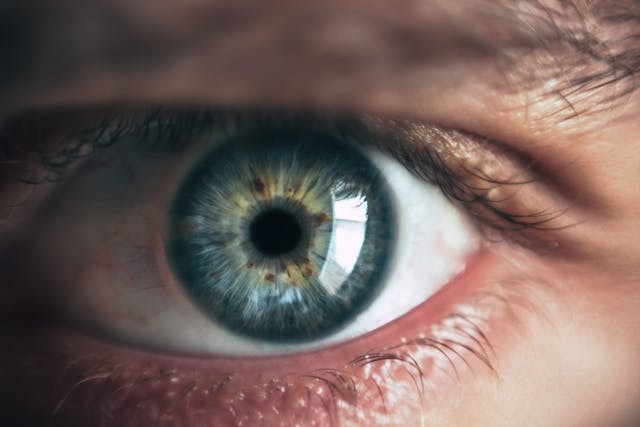
(Photo : Pexels/Victor Freitas)
Blinking offers numerous benefits for our eyes, from lubricating the eyeballs to clearing away particles. However, aside from that, the simple act can be a signal to the brain when one is processing visual information.
Blinking and Brain When Processing Visual Information
In a new study, researchers from the University of Rochester in New York examined the act of blinking, which we do 3 to 8 percent during our waking hours. They learned that the simple act is connected to the brain when processing a big virtual scene.
The study's methodology involved tracking the eye movements of human observers and combining the data with spectrum analysis -- the study of the different frequencies present in visual stimuli -- and computer models. This gave the researchers the opportunity to investigate how blinking differs from closed eyelids in terms of how the eyes perceive.
The researchers assessed the sensitivity of humans to various stimuli, such as patterns at various levels of detail.
They discovered that people's ability to recognize large, steadily changing patterns improves when they blink. Put another way, blinking enables us to compile data about what we're viewing to create a more comprehensive image.
Our eyelids move quickly as we blink, changing the light patterns that effectively stimulate the retina. Compared to when our eyes are open and focused on a single object, this generates a different visual signal for our brain.
Given that we blink more than is truly required to keep our eyes lubricated, the results provide more proof that blinking is more than just a mechanism to keep our eyes wet and healthy.
Rather, blinking is a crucial step in the information-gathering process that facilitates visual processing. It also aids in making up for the fact that when we close our eyes to blink, we lose sensory exposure.
The results add to the increasing amount of evidence that shows that eyesight results from both motor activity and sensory information. For example, our body language aids our brain's understanding of space when we smell or touch.
"It adds to a growing body of evidence-in good part from our laboratory-showing that the visual system is very sensitive to temporal changes and use them to represent spatial information," said study author and professor Michele Rucci. "In other words, unlike a camera, the visual system does not just use the image on the retina, but it relies strongly on how this image changes."
ALSO READ: Blinking Slowly Could Be an Effective Way To Communicate With Cats, Study Reveals
Why Do We Blink?
Humans blink for two main reasons, according to ophthalmologist Dr. Brenda Pagan-Duran of the American Academy of Ophthalmology. First, blinking aids in removing dust from the eyes. If something foreign gets blown in or lodged beneath the eyelid, it must be taken out immediately.
Second, blinking lubricates the eyes of the person. Smooth surfaces allow light to enter our eyes effectively and prevent fuzzy vision.
To maintain the smooth surface of the eyeball, a tear film made of water, oil, and mucus is secreted when someone blinks. In addition, this film offers white blood cells a route if the surface of the eye is injured.
In addition, blinking keeps the eye from drying out, which is sometimes soothing. Because this layer has a lot of nerve endings, a significant area of dryness can be quite painful and nearly seem like a scratch on the cornea.
RELATED ARTICLE: How Do Fireflies Blink in Sync? Mathematicians Confirm Novel Form of "Chimeric" Synchrony
Check out more news and information on Blinking in Science Times.


![Humans Will Go Extinct on Earth in 250 Million Years; Mass Extinction Will Occur Sooner if Burning Fossil Fuels Continues [Study]](https://1721181113.rsc.cdn77.org/data/thumbs/full/53373/89/56/50/40/humans-will-go-extinct-on-earth-in-250-million-years-mass-extinction-will-occur-sooner-if-burning-fossil-fuels-continues-study.jpeg)











